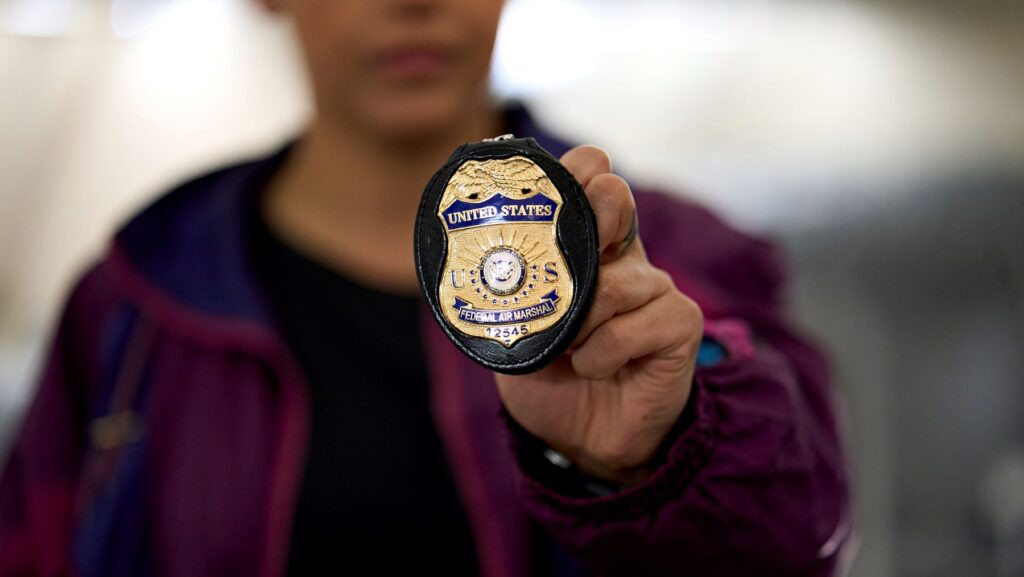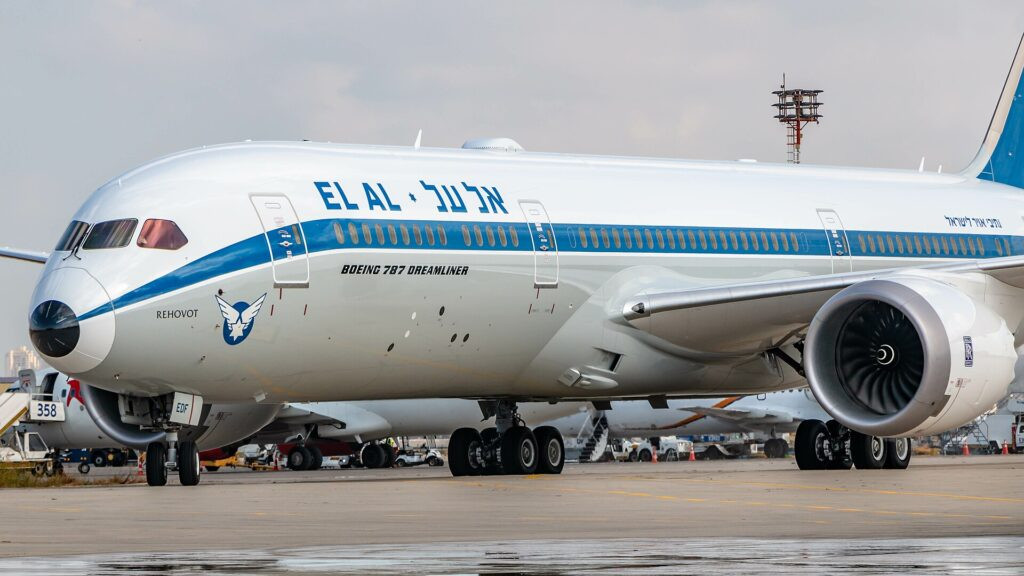Do Air Marshals Fly On Every Flight? The presence of air marshals is a critical component of aviation security, but they are not on every flight. Join flyermedia.net as we uncover the facts about air marshals, their role in ensuring flight safety, and how their strategic deployment enhances security measures in air travel. This article offers key insights into aviation security protocols, federal air marshal service, and airline security.
1. Air Marshal Deployment: Are They On Every Flight?
No, air marshals are not present on every flight. The Federal Air Marshal Service (FAMS) strategically deploys air marshals based on risk assessments, meaning only a small percentage of flights have them on board. According to data, less than 5% of flights in the U.S. have air marshals.
This limited coverage highlights the need for a multi-layered approach to aviation security. FAMS uses sophisticated risk assessment software to determine which flights require air marshal presence, considering factors such as:
- Aircraft type
- Departure and destination cities
- Flight path
- Fuel amount
- Current threat intelligence
By focusing on high-risk flights, FAMS maximizes the impact of its resources. However, the low percentage of flights with air marshals underscores the importance of other security measures, including enhanced passenger screening, reinforced cockpit doors, and vigilant flight crews.
2. Understanding the Role of Air Marshals
Air marshals are essential for maintaining safety and security on commercial flights. These highly trained federal law enforcement officers are responsible for identifying and neutralizing potential threats, ensuring the safety of passengers and crew. Their duties extend beyond simply reacting to in-flight incidents.
Here are some of the key responsibilities of air marshals:
- Threat Detection: Air marshals are trained to observe and identify suspicious behavior that may indicate a potential threat.
- Intervention: If a threat is detected, air marshals are prepared to take immediate action to neutralize it, up to and including the use of force.
- Coordination: Air marshals work closely with flight crews and other law enforcement agencies to ensure a coordinated response to any security incidents.
- Risk Analysis: On the ground, air marshals conduct risk assessments and investigations to prevent terrorist attacks before they occur.
- Enforcement: Air marshals have the authority to enforce federal laws and regulations related to aviation security.
 Federal Air Marshal Programme
Federal Air Marshal Programme
3. How to Become an Air Marshal: Requirements and Training
Becoming an air marshal is a challenging but rewarding career path for those dedicated to protecting the skies. The Federal Air Marshal Service (FAMS) has strict requirements and a rigorous training program to ensure that only the most qualified candidates are selected.
Here are the basic requirements to become an air marshal:
- Citizenship: Must be a U.S. citizen.
- Age: Must be between 21 and 36 years old.
- Education: Must have a bachelor’s degree or equivalent experience.
- Physical Fitness: Must pass a medical exam and meet physical fitness standards.
- Background Check: Must pass a comprehensive background check, including a polygraph test.
The training program for air marshals is intense and covers a wide range of skills, including:
- Firearms Training: Air marshals receive extensive training in the use of firearms and other weapons.
- Defensive Tactics: Air marshals learn how to defend themselves and others in a variety of situations.
- Surveillance Techniques: Air marshals are trained to observe and identify suspicious behavior.
- Legal Issues: Air marshals receive training on relevant laws and regulations.
- Crisis Management: Air marshals learn how to manage and resolve crisis situations.
Once selected and trained, air marshals gain federal arrest authority, allowing them to act as law enforcement officers in virtually any situation.
4. Air Marshal Numbers: How Many Per Plane?
The number of air marshals on a flight is determined by a risk assessment conducted by the Federal Air Marshal Service (FAMS). Typically, domestic flights may have one or two air marshals, while international flights can have up to four or more. The exact number is kept confidential for security reasons.
Several factors influence the decision to deploy air marshals, including:
- Destination: Flights to or from high-risk countries are more likely to have air marshals.
- Passenger List: Information about passengers, including their backgrounds and travel history, may factor into the decision.
- Threat Levels: Current threat intelligence and security alerts can impact the number of air marshals assigned to a flight.
- Aircraft Size: Larger planes may require more air marshals to ensure adequate coverage.
While passengers are not informed about the presence of air marshals on their flight, the knowledge that these trained professionals are on board provides an added layer of security.
 Air Marshals or Sky Marshals are undercover agents or officers on flights. They carry guns and can make arrests.
Air Marshals or Sky Marshals are undercover agents or officers on flights. They carry guns and can make arrests.
5. Communication Protocol: Do Flight Crews Know Air Marshal Identities?
Yes, flight crews are informed about the presence and identity of air marshals on their flights. Airlines have protocols in place to ensure that cockpit and cabin crews are aware of any armed passengers, including air marshals and law enforcement officers.
The process typically involves:
- Introduction: Air marshals present their credentials to the flight crew before boarding or during the pre-flight briefing.
- Seat Assignment: The crew is informed of the air marshal’s seat location to facilitate communication and coordination.
- Confidentiality: Crew members are instructed to maintain discretion about the air marshal’s identity to preserve their undercover status.
This communication is essential for ensuring a coordinated response in the event of a security threat. By knowing the air marshal’s presence and location, the flight crew can effectively communicate and collaborate with them to manage any potential incidents.
6. Global Presence: Which Countries Utilize Air Marshals?
Air marshals, also known as sky marshals, are utilized by numerous countries around the world to enhance aviation security. While the United States is a prominent user of air marshals, other nations with air marshal programs include:
- Australia
- Austria
- Canada
- India
- Ireland
- Pakistan
- Singapore
- United Kingdom
Each country tailors its air marshal program to its specific security needs and resources. The level of deployment varies, with some countries using air marshals more selectively than others based on risk assessments.
Israel’s national carrier, El Al Airlines, is unique in that it ensures a sky marshal is present on every flight. This exceptional security measure reflects Israel’s geopolitical situation and the heightened threats faced by its national airline.
 Air Marshals or Sky Marshals are undercover agents or officers on flights. They carry guns and can make arrests.
Air Marshals or Sky Marshals are undercover agents or officers on flights. They carry guns and can make arrests.
7. New Threats: How Cyberattacks Impact Air Travel Security
In addition to traditional security concerns, cyberattacks have emerged as a significant threat to air travel. Hackers can target various aspects of the aviation industry, including:
- Airports: Disrupting airport operations by attacking computer systems that control air traffic, security, and other essential functions.
- Airlines: Gaining access to passenger data, disrupting flight schedules, or even attempting to manipulate aircraft systems.
- Freight Forwarders: Compromising cargo security and potentially smuggling dangerous goods onto planes.
A recent incident involved hackers in Somalia attempting to change an El Al flight’s route, highlighting the potential consequences of cyber intrusions.
To address these evolving threats, the Transportation Security Administration (TSA) has issued new cybersecurity requirements for airports and aircraft operators. These measures build on previous efforts to enhance digital security and protect against cyberattacks.
8. Federal Flight Deck Officer Program: An Additional Layer of Security
The Federal Flight Deck Officer (FFDO) program is another key component of aviation security in the United States. Created after the 9/11 attacks, the FFDO program trains and authorizes eligible pilots to carry firearms in the cockpit.
Here are the key aspects of the FFDO program:
- Pilot Training: Participating pilots undergo intensive training in firearms handling, defensive tactics, and security protocols.
- Authorization: Pilots who successfully complete the training program are authorized to carry a firearm in the cockpit.
- Last Line of Defense: FFDOs serve as a last line of defense against potential threats, providing an additional layer of security beyond air marshals.
While no FFDO has ever had to use their firearm in a real-world situation, the program serves as a deterrent and provides pilots with the means to protect themselves, their crew, and their passengers in the event of a credible threat.
9. The Role of Technology in Enhancing Air Travel Security
Technology plays a crucial role in enhancing air travel security, helping to detect threats, improve screening processes, and streamline operations. Here are some of the key technological advancements used in aviation security:
- Advanced Imaging Technology (AIT): AIT scanners are used to screen passengers for concealed weapons and other prohibited items.
- Explosive Detection Systems (EDS): EDS machines use advanced algorithms to detect explosives in baggage and cargo.
- Biometric Identification: Biometric technologies, such as facial recognition and fingerprint scanning, are used to verify passenger identities and enhance security at checkpoints.
- Cybersecurity Measures: Advanced cybersecurity systems are used to protect against cyberattacks and safeguard sensitive data.
- Surveillance Systems: High-resolution surveillance cameras and video analytics are used to monitor airport perimeters and detect suspicious activity.
These technologies, combined with well-trained personnel and robust security protocols, help to create a safer and more secure air travel experience.
10. Staying Informed: Key Resources for Aviation Security News and Updates
Staying informed about the latest developments in aviation security is essential for both industry professionals and the traveling public. Here are some key resources for aviation security news and updates:
- Transportation Security Administration (TSA): The TSA website provides information on security policies, travel tips, and the latest news and updates.
- Federal Aviation Administration (FAA): The FAA website offers information on aviation regulations, safety standards, and air traffic control.
- International Air Transport Association (IATA): IATA provides industry insights, best practices, and news on aviation security and safety.
- Aviation News Outlets: Reputable aviation news outlets, such as Aviation Week & Space Technology and FlightGlobal, provide in-depth coverage of aviation security issues.
- Flyermedia.net: For the latest aviation updates.
By staying informed and vigilant, we can all contribute to a safer and more secure air travel environment.
FAQ: Air Marshals and Flight Security
Here are some frequently asked questions about air marshals and flight security:
-
Are air marshals on every flight?
- No, air marshals are not on every flight. They are strategically deployed based on risk assessments.
-
How do I become an air marshal?
- You must be a U.S. citizen between 21 and 36 years old, have a bachelor’s degree or equivalent experience, and pass a rigorous selection and training process.
-
Do flight crews know who the air marshals are on their flights?
- Yes, flight crews are informed about the presence and identity of air marshals for coordination purposes.
-
Which countries use air marshals?
- Several countries, including the U.S., Australia, Canada, India, and the UK, utilize air marshals.
-
What is the Federal Flight Deck Officer (FFDO) program?
- The FFDO program trains and authorizes eligible pilots to carry firearms in the cockpit as a last line of defense.
-
How do cyberattacks affect air travel security?
- Cyberattacks can disrupt airport operations, compromise passenger data, and potentially manipulate aircraft systems.
-
What technologies are used to enhance air travel security?
- Advanced Imaging Technology (AIT), Explosive Detection Systems (EDS), and biometric identification are used to enhance security.
-
How does the TSA enhance air travel security?
- The TSA sets security policies, screens passengers and baggage, and works to protect the U.S. transportation systems.
-
Where can I find the latest aviation security news and updates?
- You can find updates from the TSA, FAA, IATA, reputable aviation news outlets, and flyermedia.net.
-
Why are air marshals important?
- Air marshals are essential for maintaining safety and security on commercial flights, deterring potential threats, and responding to in-flight incidents.
Ready to delve deeper into the world of aviation and explore exciting career opportunities? Visit flyermedia.net today to discover comprehensive resources on flight training, airline news, and aviation jobs in the USA. Your journey towards a thrilling aviation career starts here!
